Q&A: Ducati’s Antoine Meo
A few months back we sent long-time moto-mad racer and content creator John Prutti to the highly-anticipated Ducati Desmo450 MX media launch. Held in the Italian motherland and attended by a who’s who of Ducati’s design staff, development team and Pro racers, calling this bike launch ‘significant’ feels partly like an understatement, given that the 2026 Desmo450 MX is Ducati’s first modern-era motocross bike, the only MX bike on the market to use desmodromic valves, and, according to Ducati, the “first of an entire family of off-road models”.
“It was so cool for me to be part of the project because some of my blood is inside this bike. I chose the suspension. I chose the braking … many things.”
While Prutti got to rip around on the machine, he also got to chat with Ducati’s Antoine Meo — a five-time World Enduro Champion who played a key role in developing the DesertX Rally models. Meo even claimed a class Prologue victory aboard one at the 2024 Red Bull Erzbergrodeo, and placed 16th overall out of over 1300 riders. Here’s what he had to say about his role in helping develop the all-new Desmo450 MX…
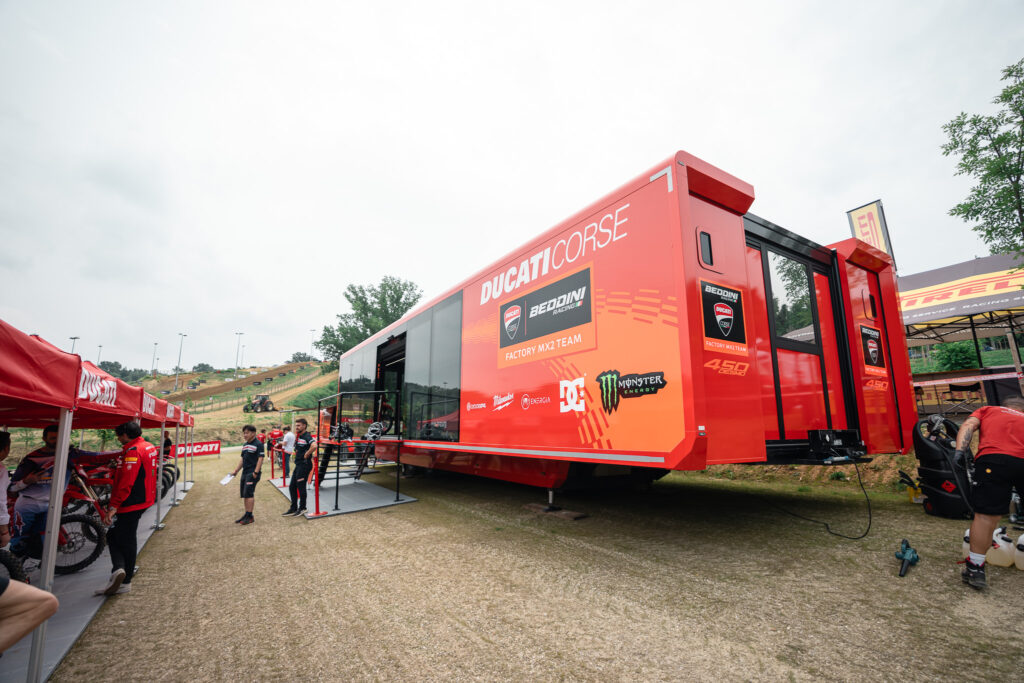
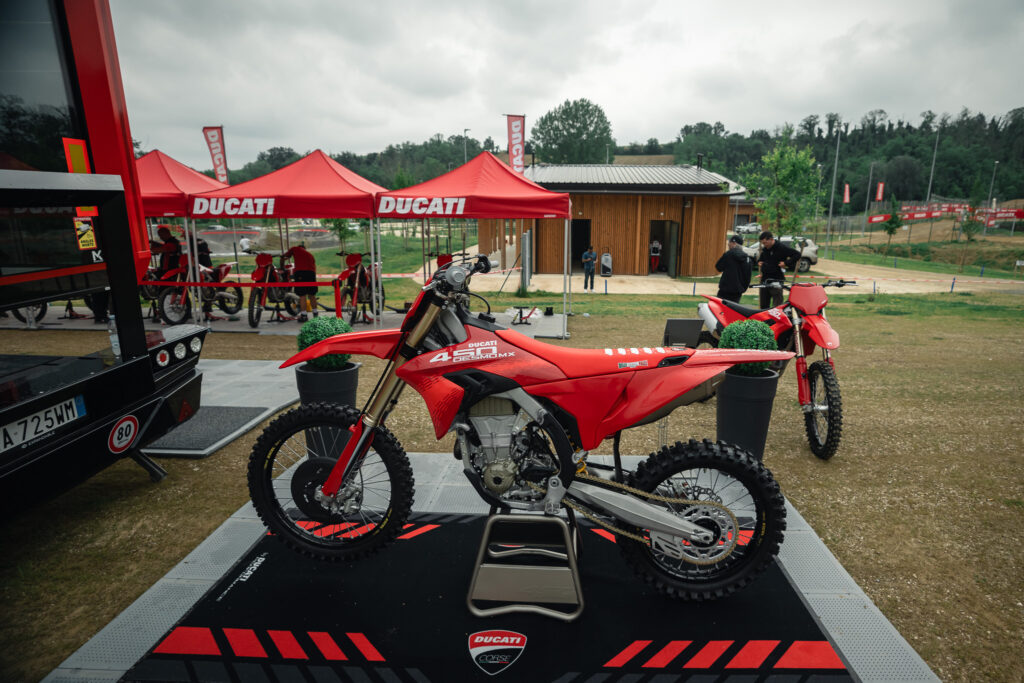
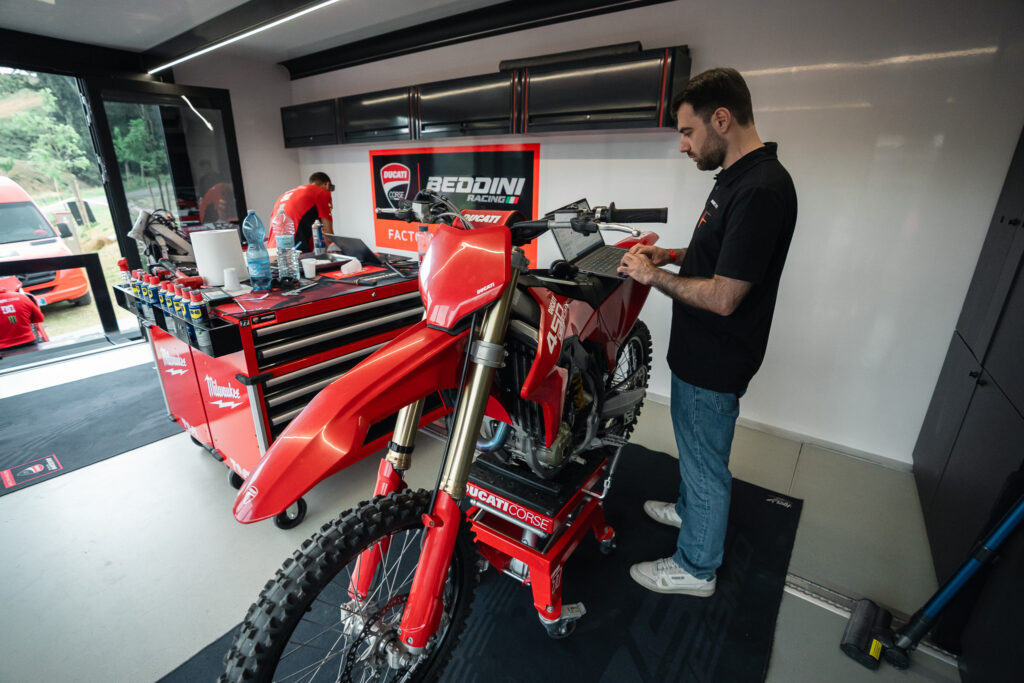
TM: Great to be here in Italy, Antione. You’ve been to Australia to race in the past though, right?
Meo: Yes, I came to Australia many years ago to race the Australian 4-Day Enduro. I was invited by Paul Feeney, who was the Husky importer in Australia back then.
Well, now we’re here in your neck of the woods, Antoine. I think a lot of people know about your input into the development of Ducati’s DesertX models. But talk us through your involvement with the Desmo450 MX – which we watched come off Ducati’s production line for the first time ever just yesterday.
Meo: It was incredible to witness that first production bike yesterday because we started the Desmo450 project four years ago, and because built the engine and chassis and everything from the ground up. We created one department for this project and in the beginning, it was just Davide Perni [Ducati’s R&D Off-Road Project Coordinator] and one mechanic. So, it’s been a long journey to where we now are with the bike.
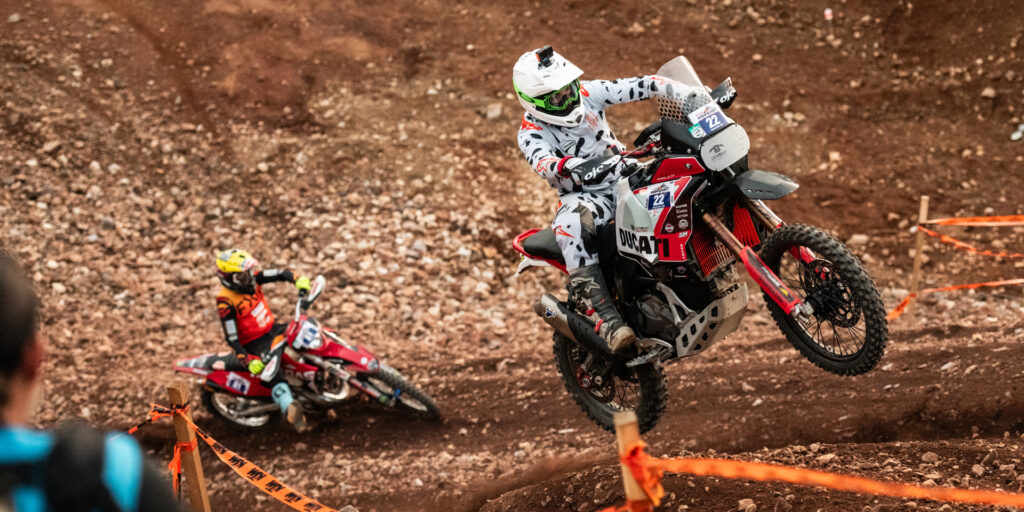
What was it like being part of the project?
Meo: It was so cool for me to be part of the project because, like Davide said, some of my blood is inside this bike. I chose the suspension. I chose the braking … many things. I was a difficult process sometimes because I’m really demanding. If I don’t get what I want, I break the walls [laughs]. But in the end, it’s a lot of satisfaction to get your feedback because the Australian market is a really important one for Ducati.
You were working with some great riders during the development process, right? Aside from you, guys like Tony Cairoli and Alessandro Lupino were also involved.
Meo: For sure. It was so important to build the right team and get well-rounded feedback about the bike. You need to remember we are developing the bike for a global network and that customers will be both riders and racers. But whoever the end customer is, developing the bike through racing has been important because it lets you more quickly identify any problems the bike may have – and fix them! We can also test parts’ performance and durability before recommending that the guys use them for racing.
And this bike has had some immediate racing success!
Meo: Yes. It was amazing for Ducati to win the 2024 Italian MX Championship while the bike was still in its development phase. That first-season success confirmed for us that the bike’s development was on-track. But, all the same, we remain focused. We know there’s still a long way to go. And we must continue to listen to feedback.
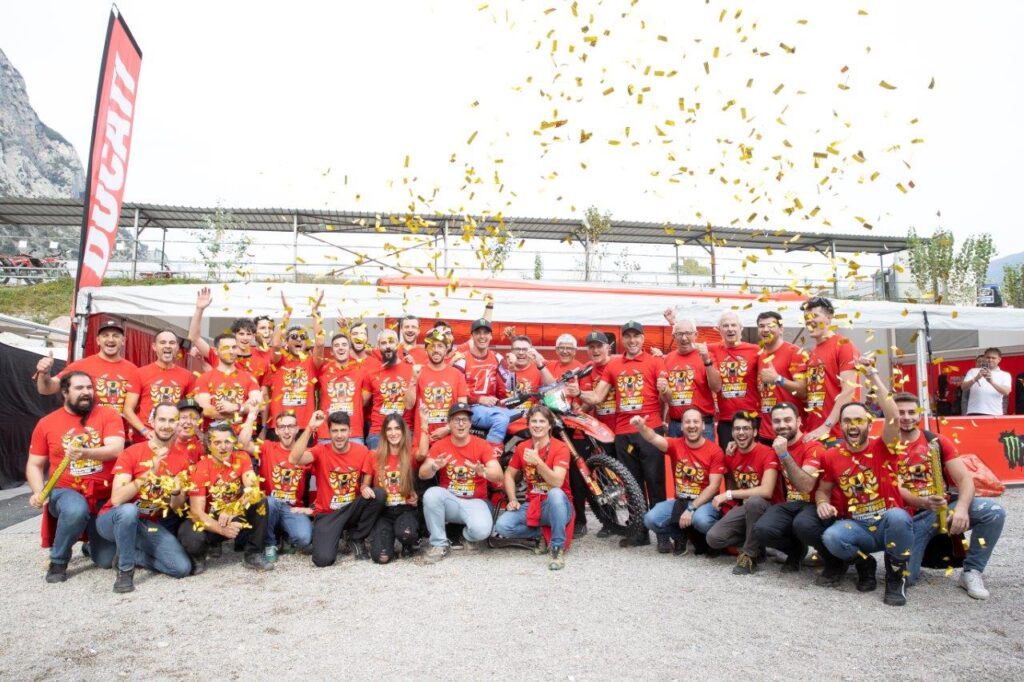
Well, here at the launch, you got independent feedback on the production bike from the world’s moto media. What sort of feedback did you get – especially given that some of the guys here are really experienced test riders?
Meo: The feedback has been great. I mean, after four years of developing the bike – and winning the Italian MX title along the way – we were confident that the bike was good. But media feedback is critical to a model’s success, so it’s true to say that it was a little stressful coming into this international launch.
“For me, it was also very important for the Italian brand to have Showa suspension. Because Showa, in my mind, is the best.”
Weeks ago, when we started all the bikes for the first time and I ran them all in, the pressure went away, and I said, ‘okay, now we are ready for this’. The positive feedback here at the launch is a confirmation for us to continue in the direction we are taking to improve the bike.
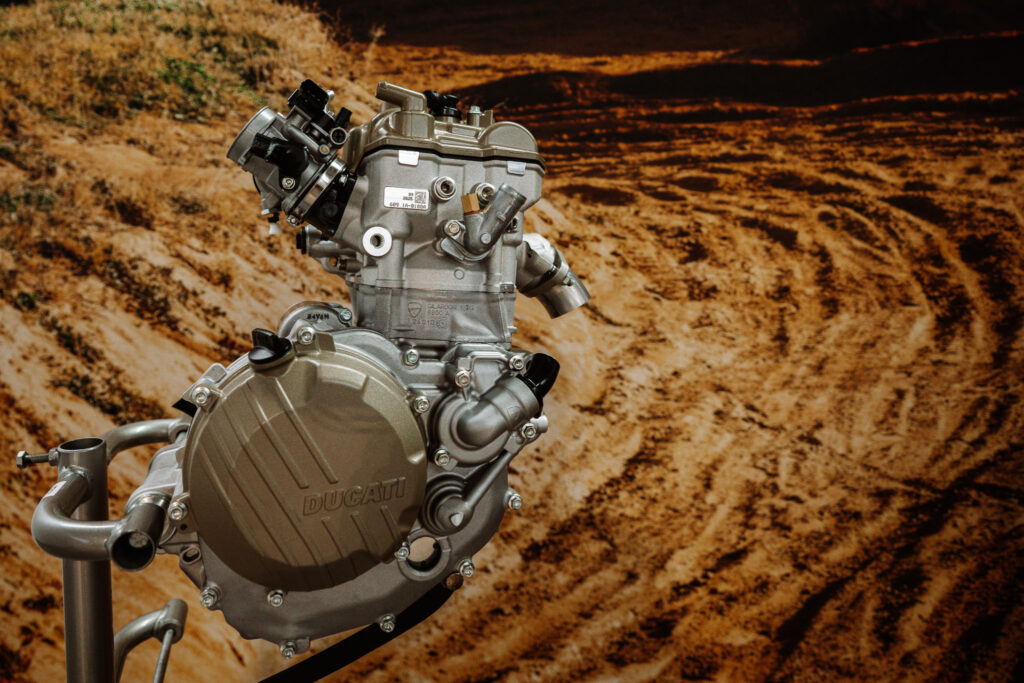
Speaking of development, it must be pretty special to work with Ducati because they have so much experience in the MotoGP, and take advantage of the benefits that road technology can have for the MX bike. What’s it been like being able to work with those guys who have so much experience in the two-wheeled space?
Meo: Well, we are very lucky to be able to work with the engineer, Davide Perni, and his team because, as you say, they are so experienced. But it been a learning experience for those guys with off-road motorcycles too. Sometimes the theory works. And sometimes, we discover that – when you test the bike in off-road terrain – it does not work in practice.
“Being able to take advantage of Ducati’s incredible experience in MotoGP has played a key role in being able to develop this Desmo450 MX to such a high level so quickly.”
For test riders and for the engineers, it can be difficult to accept when things are not working on the bike. But making sure the process of developing the bike is always systematic, we can quickly rule out things that don’t work and move in a different direction. Learning to accept things that don’t work is a good character trait to have. That’s a key part of development and moving forward.
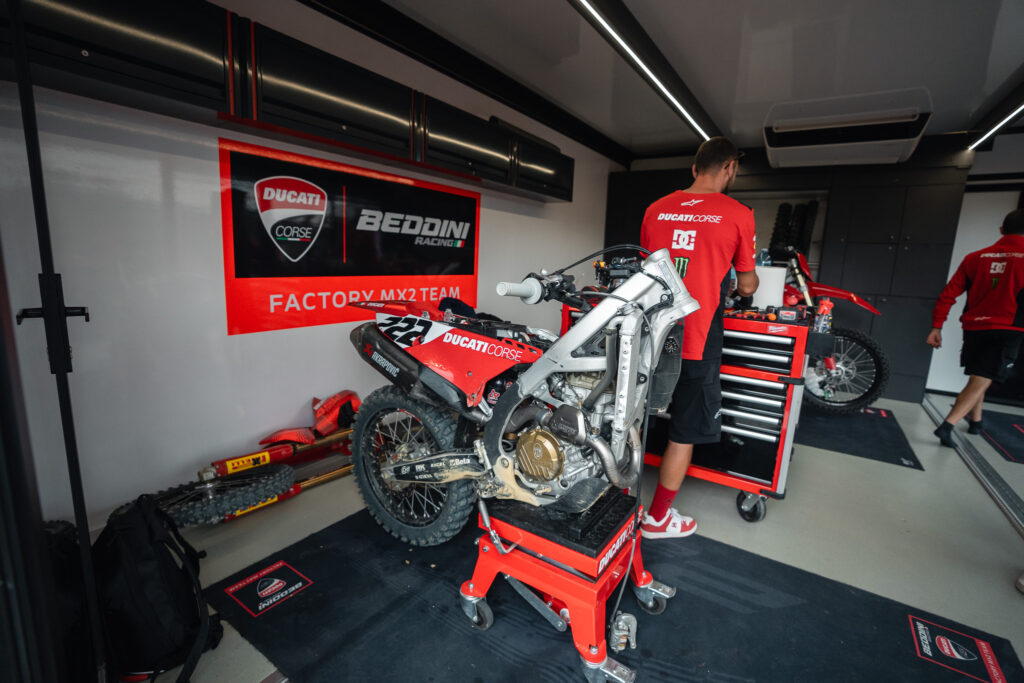
Interesting. So, it’s important to be able to have those hard conversations – so you can accept that what you’re saying on paper doesn’t necessarily reflect in real-life performance when you test in off-road terrain, right?
Meo: Yes, exactly. For me, it was also very important for the Italian brand to have Showa suspension. Because Showa, in my mind, is the best. To have a team working directly with the Japanese is also important for us. In the beginning, I pushed a lot for Showa, but not everyone agreed with me. And there was some tension. I needed to be careful not to be too demanding with the Japanese engineers and put too much pressure on them. But when the feedback from Alessandro Lupino and Tony Cairoli was in the same direction as me, everybody was confident and that allowed us to start making bigger steps forward. In the end, we built an amazing relationship with the Showa guys, and the suspension package became a key element of the bike that we all now really enjoy.
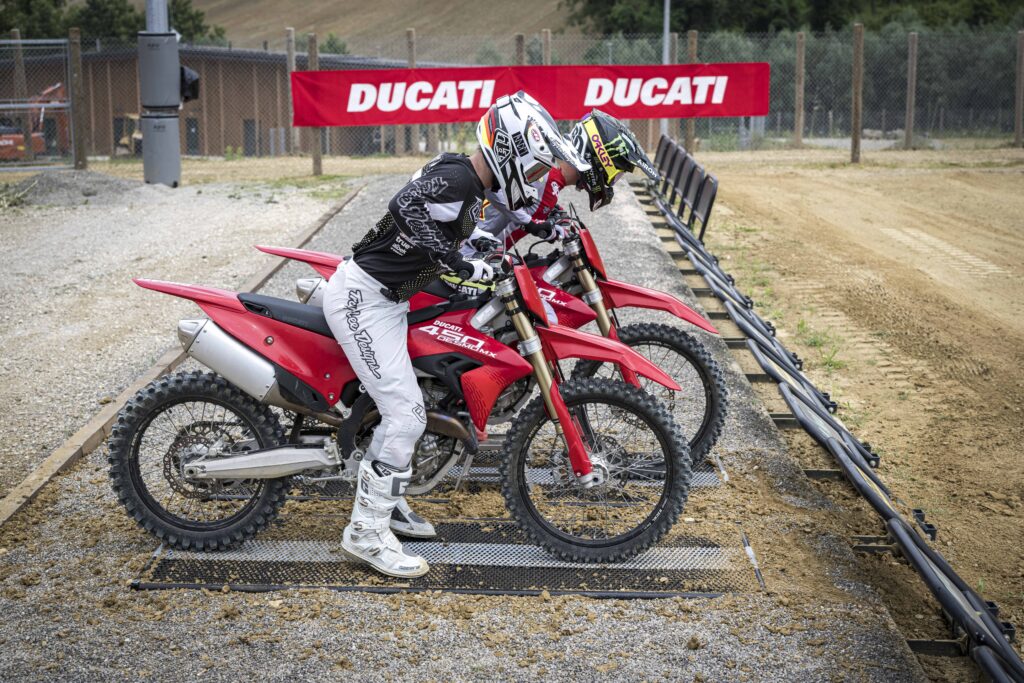
This must be such a proud moment for you. Just being able to see so many of these bikes now off the production line must feel amazing.
Meo: Yes, a very proud moment. Yesterday was an emotional moment because, when you start four years ago with a bike that was not even what you would call a prototype – it was just some parts and an idea – and then arrive at this point … yes, a big sense of achievement. And it’s an achievement not just for me, but for a whole team of Ducati people. Coming back to what you said about Ducati’s MotoGP technology, being able to take advantage of that incredible experience played a key role in being able to develop this Desmo450 to such a high level so quickly.
“Currently, for instance, we only use 30 percent of what we are able to do with the traction control, so the possibilities are great.”
In fact, it seems to me that there are technologies that Ducati is bringing to the motocross world that’s going to elevate the entire sport. Currently, for instance, we only use 30 percent of what we are able to do with the traction control, so the possibilities are great. I don’t want to say that Ducati is able to change the vision of motocross. But you need to just understand that Claudio Domenicali [CEO of Ducati Motor Holding S.p.A.] has said that we need to limit some of the most ambitious development plans for now and to build the bike like the other manufacturers do. But in the future, Ducati’s thinking is to make something very different; to introduce new things to motocross and to go ‘far away’, let’s say.
I’ll be watching with interest. Thanks for your time, Antoine.
Meo: No worries, John. And thank you for flying halfway around the world to get a taste of what we have been working on for many years. It seemed like you were enjoying yourself out there on the track.
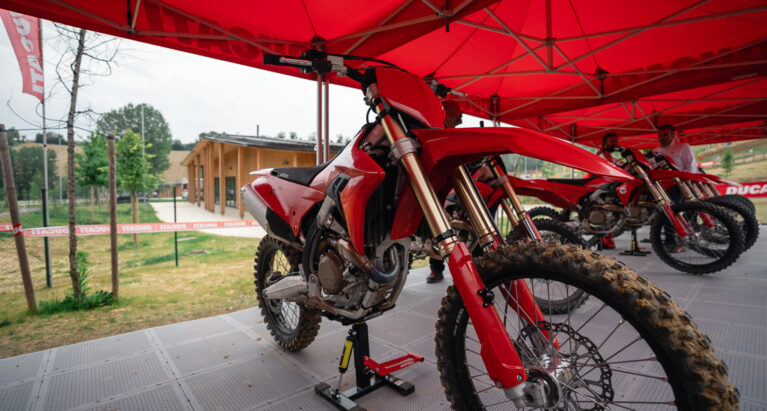
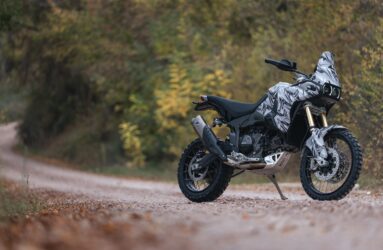

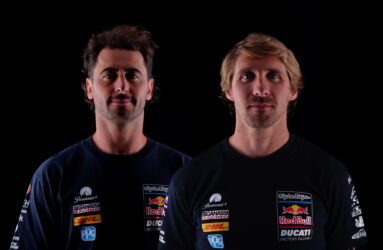
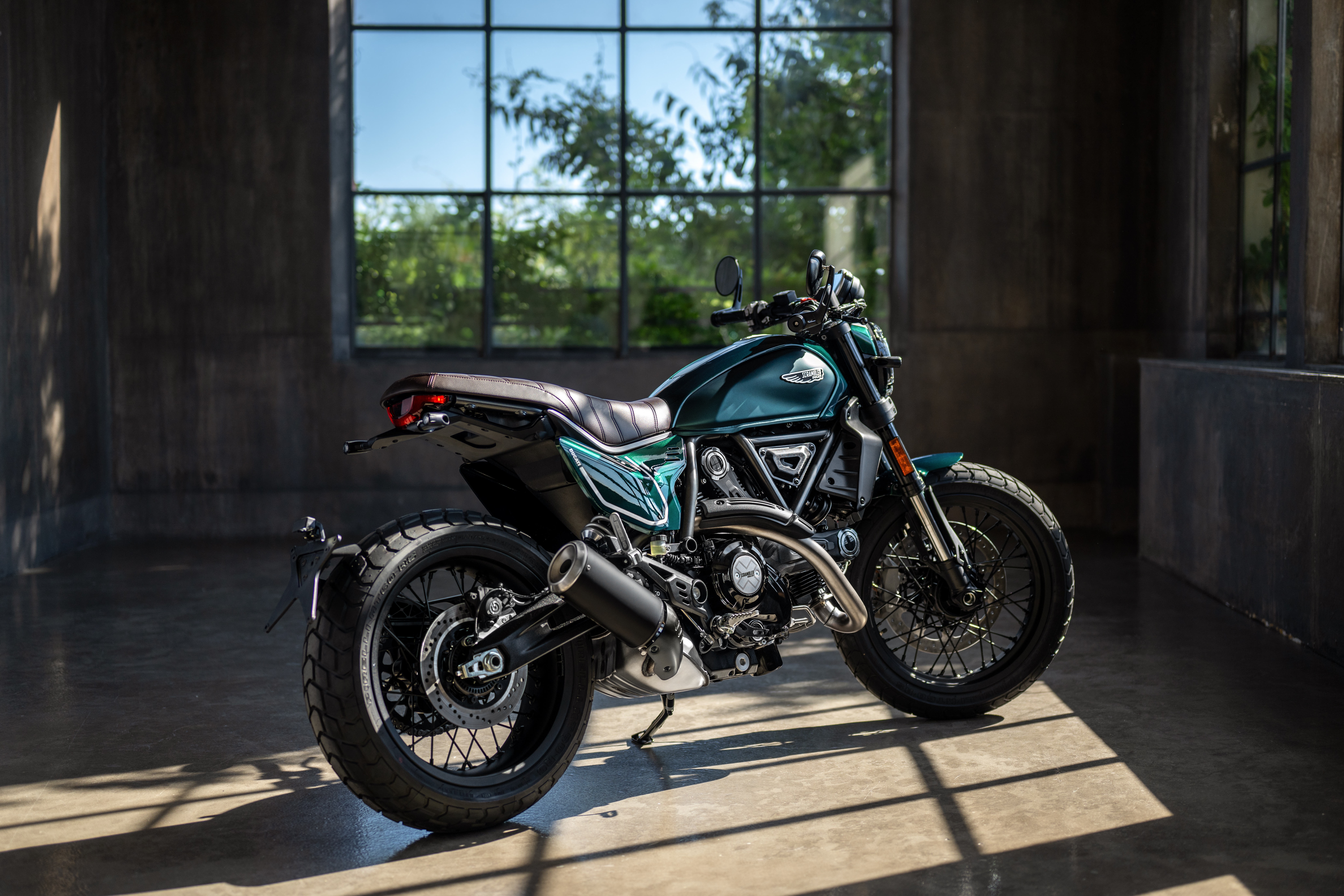
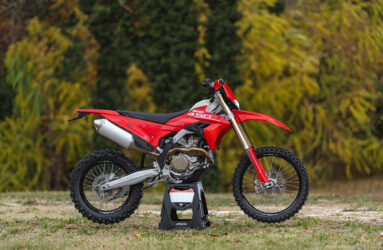
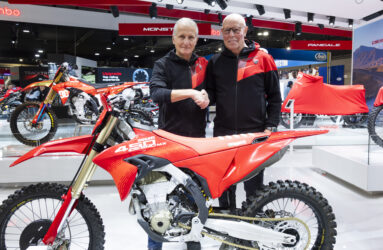
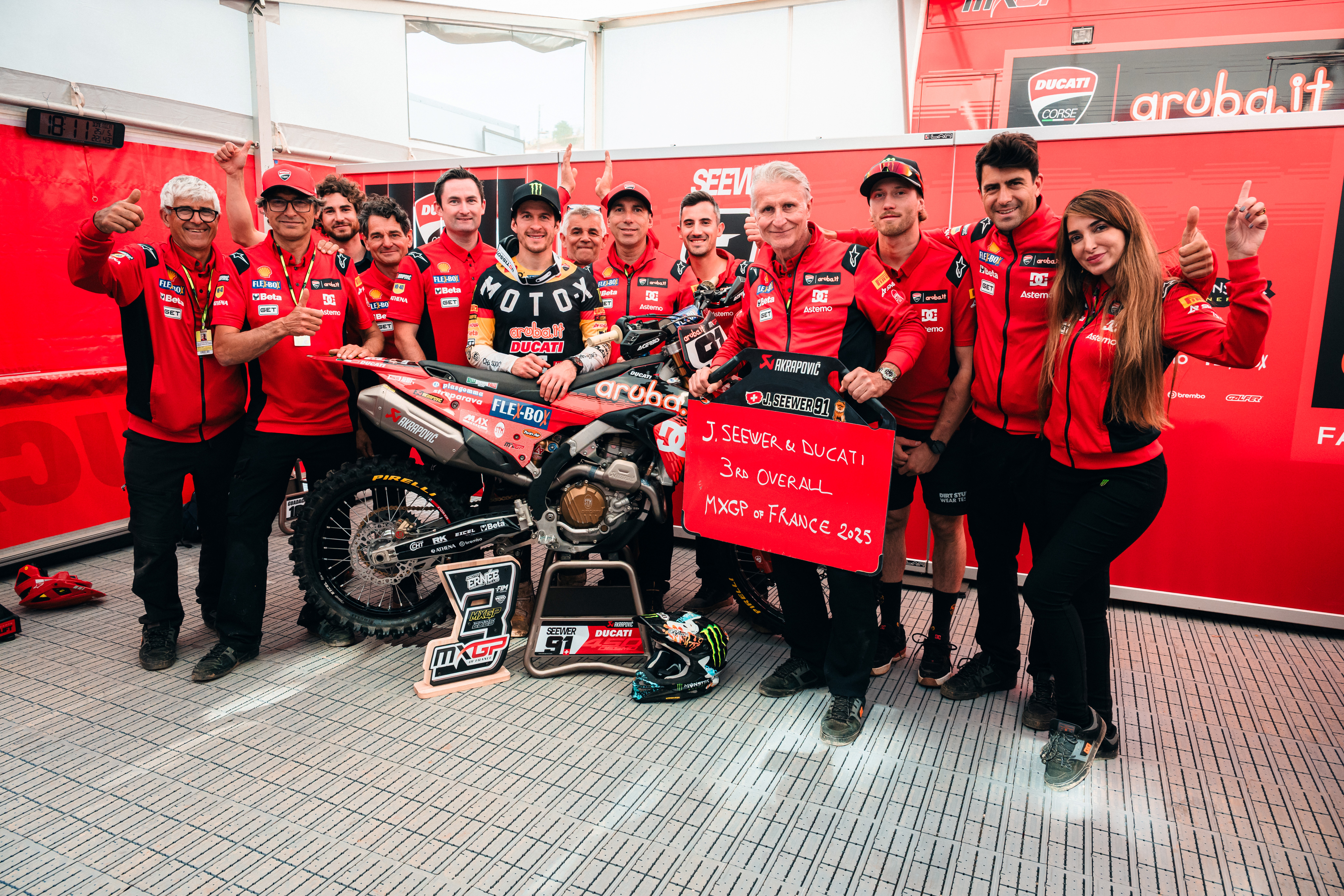
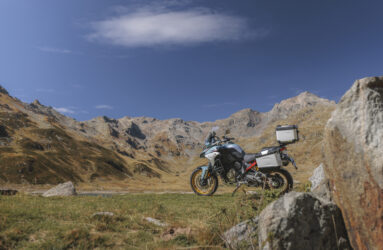
Be the first to comment...